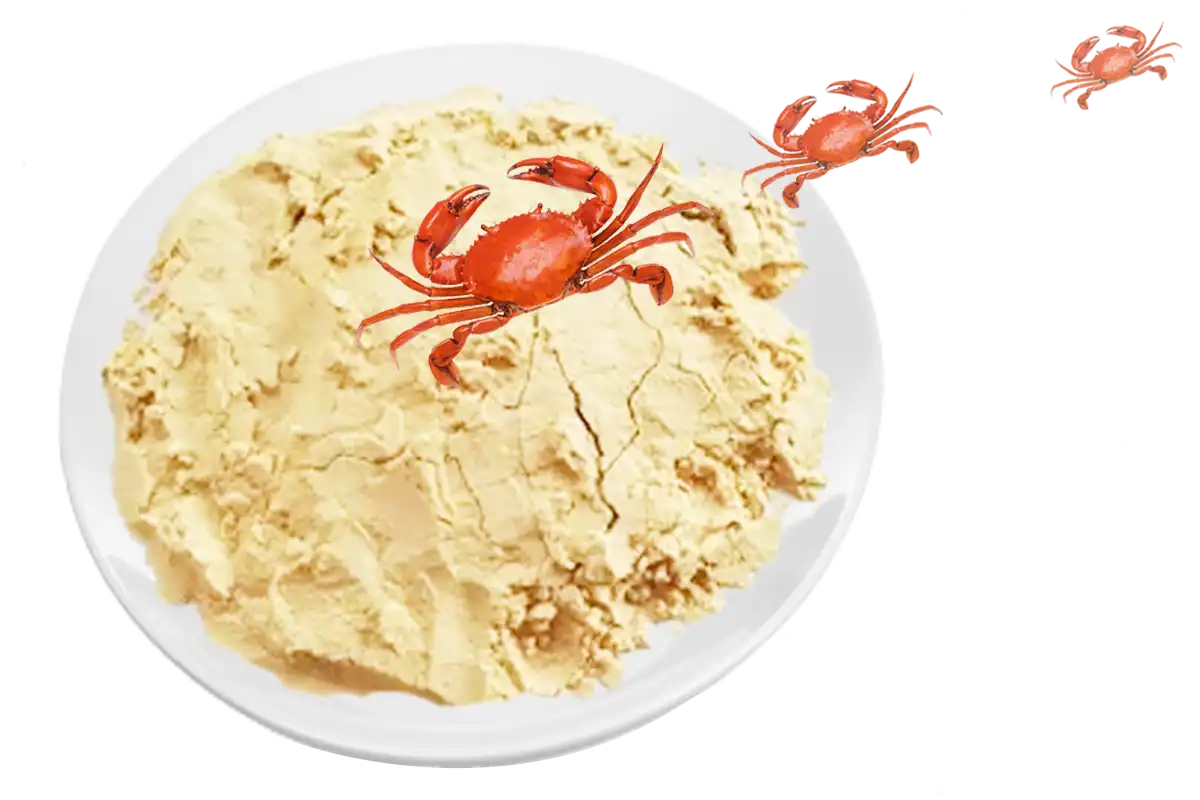
A little crab
is enough to change the world

is enough to change the world
Chitin, which is widely found in shrimp and crab shells, is a polysaccharide made by the polymerization of N acetyl glucosamine.
Chitin is deacetylated to obtain chitosan.
In the past ten years, the research on chitin and chitosan has been widely carried out at home and abroad, and their functions in anti-tumor and prevention and treatment of pathogenic microorganisms have attracted more and more attention. However, due to its insoluble water, it is very limited in the development of applications. To this end, chitosan is degraded into Chito-oligosaccharides (also known as oligosaccharides, chitosan oligosaccharides, chitosan oligosaccharides) by appropriate methods, that is, oligosaccharides composed of 2~10 aminoglycoses linked by β-1-4 glycosidic bonds.
Through a series of experiments, it has been found that it not only has good water solubility, is easy to be absorbed by the human body, but also has a variety of physiological functions such as antibacterial, anti-tumor, blood lipid regulation, immune regulation and activation of intestinal bifidobacteria, and the application field has been greatly broadened.
Chito-oligosaccharides has a unique application value in fine chemicals, biomedicine, health food, agriculture, forestry and animal husbandry.

Chito-oligosaccharides chemical structure

2.1 Biological activity. Chito-oligosaccharides has a water solubility of more than 99% and a human absorption rate of 99.88%, which has superior biological activity than chitosan. It can improve the flora distribution of intestinal microbes, stimulate the growth of beneficial bacteria, and its pharmacological activity is 14 times that of chitosan of the same weight. Experiments have shown that Chito-oligosaccharides can proliferate Bifidobacterium by 120 times when applied to dairy products.
2. 2 Antibacterial and antibacterial effect. Chito-oligosaccharides has a pronounced antibacterial and antibacterial effect. Its antibacterial effect is also gradually enhanced with the decrease of the molecular weight of Chito-oligosaccharides, with a molecular weight of 1 814, the degree of deacetylation of 84% Chito-oligosaccharides treated non-woven fabrics, it was found that the concentration of 0.01% against Proteus vulgaris reached 90%, while for Staphylococcus aureus and Escherichia coli, 0.05%, the molecular weight is 2 000~ 30 000, and the degree of deacetylation is 91.5% Chito-oligosaccharides inactivates two oral pathogens, Actinobacillus actinobacillus and Streptococcus mutans.
2. 3 Anti-tumor effects. Chito-oligosaccharides can improve the body's immune activity and anti-cancer ability, and has a significant inhibitory effect on liver cancer cells.
2. 4 Disease prevention and disease resistance of plants. Chito-oligosaccharides also acts as a plant regulator to enhance the plant's defenses against pests and diseases. Oligosaccharides have the functions of regulating plant growth, development, reproduction, disease prevention and resistance, etc., can stimulate the immune system response of plants, activate defense responses, produce active substances with disease resistance, and inhibit the formation of diseases.
Chito-oligosaccharides, derived from marine crab shells, provide various benefits and functions in the field of biopackaging. Here's a breakdown in detail:
Advantages of Chito-oligosaccharides in biopackaging
Biodegradability: Chito-oligosaccharides are fully biodegradable, reducing environmental pollution compared to traditional plastic packaging.
Non-toxic: Chito-oligosaccharides are derived from natural sources, are non-toxic and safe for use in food packaging, and are not harmful to consumers or the environment.
Antimicrobial properties: Chitosan has inherent antimicrobial properties that help extend the shelf life of packaged foods by inhibiting the growth of bacteria and fungi.
Barrier Properties: It has excellent oxygen and oil barrier properties, which are essential for maintaining the quality and freshness of food.
Compatibility with other materials: Chitosan can be easily combined with other biopolymers to enhance the mechanical and barrier properties of the resulting biopackaging material.
Functions of Chito-oligosaccharides in biological packaging
Food preservation: Uses its antibacterial and antifungal properties to maintain the quality and extend the shelf life of perishable goods such as fruits, vegetables, and meat.
Edible coatings: Chito-oligosaccharides are used to create edible films or coatings that adhere directly to the surface of food, providing additional protection against spoilage and physical damage.
Controlled release of additives: Chito-oligosaccharides films can incorporate functional additives such as antioxidants, flavors, or nutrients that can be released in a controlled manner to improve food quality and safety.
Water vapor barrier: Acts as an effective barrier to water vapor and helps maintain the moisture content required by food, which is essential for products such as baked goods and dried fruits.
Reduced environmental impact: By replacing synthetic plastics with biodegradable chitosan-based materials, the overall environmental impact of packaging waste is significantly reduced.
The use of Chito-oligosaccharides in bio-packaging is a promising development for sustainable packaging solutions that offer both functional and environmental benefits.
The service has a warm connection with the customer